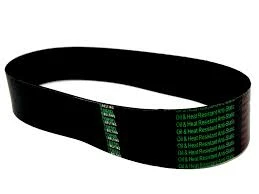- Arabic
- French
- Russian
- Spanish
- Portuguese
- Turkish
- Armenian
- English
- Albanian
- Amharic
- Azerbaijani
- Basque
- Belarusian
- Bengali
- Bosnian
- Bulgarian
- Catalan
- Cebuano
- Corsican
- Croatian
- Czech
- Danish
- Dutch
- Afrikaans
- Esperanto
- Estonian
- Finnish
- Frisian
- Galician
- Georgian
- German
- Greek
- Gujarati
- Haitian Creole
- hausa
- hawaiian
- Hebrew
- Hindi
- Miao
- Hungarian
- Icelandic
- igbo
- Indonesian
- irish
- Italian
- Japanese
- Javanese
- Kannada
- kazakh
- Khmer
- Rwandese
- Korean
- Kurdish
- Kyrgyz
- Lao
- Latin
- Latvian
- Lithuanian
- Luxembourgish
- Macedonian
- Malgashi
- Malay
- Malayalam
- Maltese
- Maori
- Marathi
- Mongolian
- Myanmar
- Nepali
- Norwegian
- Norwegian
- Occitan
- Pashto
- Persian
- Polish
- Punjabi
- Romanian
- Samoan
- Scottish Gaelic
- Serbian
- Sesotho
- Shona
- Sindhi
- Sinhala
- Slovak
- Slovenian
- Somali
- Sundanese
- Swahili
- Swedish
- Tagalog
- Tajik
- Tamil
- Tatar
- Telugu
- Thai
- Turkmen
- Ukrainian
- Urdu
- Uighur
- Uzbek
- Vietnamese
- Welsh
- Bantu
- Yiddish
- Yoruba
- Zulu
Oct . 04, 2024 07:48 Back to list
synchronous belt drive
Understanding Synchronous Belt Drives An Overview
Synchronous belt drives are an essential component in various mechanical systems, widely utilized for power transmission in numerous applications ranging from automotive engines to industrial machinery. Unlike traditional V-belt drives, synchronous belts operate with a precise timing mechanism that ensures greater efficiency and reliability, making them the preferred choice for many engineers and technicians.
At the core of the synchronous belt drive system is a toothed belt, constructed from high-strength materials such as neoprene or polyurethane, and reinforced with aramid fibers or steel cords to withstand high loads and operational stresses. This belt matches with toothed pulleys, which engage with the teeth on the belt to provide a synchronous motion. This design eliminates slippage, allowing for accurate transmission of torque and position.
One of the most significant advantages of synchronous belt drives is their ability to maintain a constant speed ratio between the driver and driven components. This reliability is critical in applications where precise timing is essential, such as in robotic systems, conveyor belts, and some automotive applications. For instance, in an automotive engine, the timing belt, a type of synchronous belt, ensures that the crankshaft and camshaft rotate in perfect synchronization, which is necessary for the engine's optimal performance.
synchronous belt drive

Moreover, synchronous belts are generally quieter and more efficient than their V-belt counterparts. The absence of slippage not only reduces noise but also decreases wear and tear on both the belt and the pulleys. Additionally, synchronous belts are designed to handle high torque loads and can operate over a wide range of temperatures, making them versatile for various environments.
Another notable feature of synchronous belt drives is their low maintenance requirements. Once properly installed, these systems can operate for extended periods without frequent adjustments, reducing downtime and maintenance costs. However, it is essential to ensure correct tension and alignment during installation to maximize their lifespan and performance.
The design and engineering of synchronous belt drives also allow for customization based on specific application needs. Manufacturers offer various belt widths, lengths, and tooth profiles, ensuring that engineers can find the right solution for their particular requirements. Whether it’s for high-speed applications or those requiring heavy loads, there’s likely a synchronous belt designed to meet the challenge.
In conclusion, synchronous belt drives represent a significant advancement in power transmission technology. Their ability to provide precise timing, efficiency, and low maintenance makes them a preferred choice across various industries. From automotive manufacturing to food processing, the applications of synchronous belt drives are vast and diverse. As industries continue to evolve and demand more reliable and efficient components, synchronous belts will undoubtedly play a crucial role in shaping the future of mechanical design and engineering. Understanding these systems is essential for anyone looking to delve deeper into the field of mechanical engineering and industrial applications.
-
Korean Auto Parts Timing Belt 24312-37500 For Hyundai/Kia
NewsMar.07,2025
-
7PK2300 90916-T2024 RIBBED BELT POLY V BELT PK BELT
NewsMar.07,2025
-
Chinese Auto Belt Factory 310-2M-22 For BMW/Mercedes-Benz
NewsMar.07,2025
-
Chinese Auto Belt Factory 310-2M-22 For BMW/Mercedes-Benz
NewsMar.07,2025
-
90916-02660 PK Belt 6PK1680 For Toyota
NewsMar.07,2025
-
drive belt serpentine belt
NewsMar.07,2025

